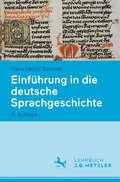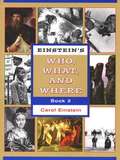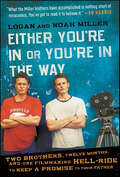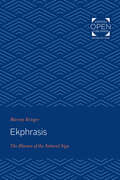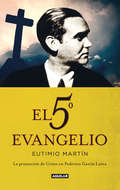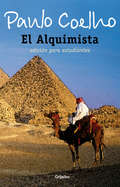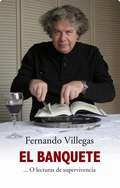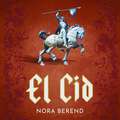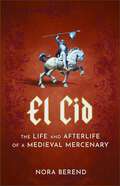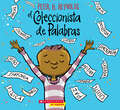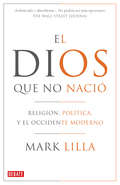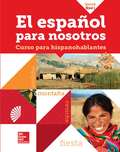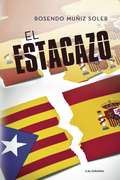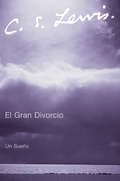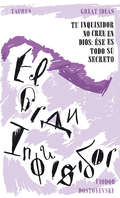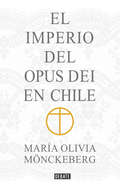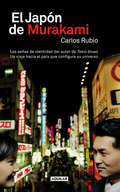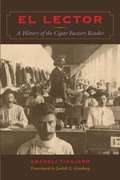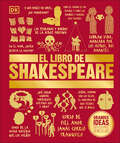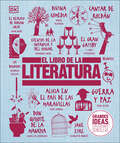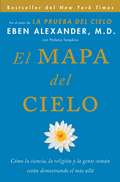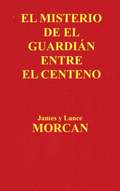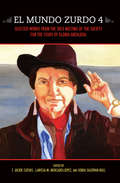- Table View
- List View
Einführung in die deutsche Sprachgeschichte
by Hans Ulrich SchmidDiese Einführung bietet einen Überblick über die Entwicklung der deutschen Sprache vom Althochdeutschen bis zum Frühneuhochdeutschen mit Ausblicken auf die jüngere Sprachgeschichte und die Gegenwartssprache. Soweit es für das Verständnis heutiger oder historischer Sprachformen notwendig ist, wird auch das Germanische und Indogermanische einbezogen. Der Autor stellt die Sprachentwicklung auf den verschiedenen Ebenen dar: Laut und Schrift, Bildung von Wörtern und Wortformen, Wortschatz, Syntax und Semantik (Bedeutungswandel). Mit Tabellen (zu Laut- und Flexionsparadigmen) und Überblicksdarstellungen, Abbildungen, Textbeispielen und Analysen sowie vertiefenden Literaturhinweisen. – Für die vierte Auflage wurde der Band komplett durchgesehen und aktualisiert.
Einstein's Who, What And Where: Book 2 (Einsteins Who, What, Where Ser.)
by Carol EinsteinWhy were people in Salem, Massachusetts, accused of being witches in the 1690s? How were books made before the printing press was invented? Why was DDT, a popular pesticide, banned in the United State
Either You're In or You're in the Way: Two Brothers, Twelve Months, and One Filmmaking Hell-Ride to Keep a Promise to Their Father
by Logan Miller Noah MillerThe hilarious, implausible, and touching story of twin brothers accomplishing the impossible—making a feature film (with a cast and crew with 11 Academy Awards and 26 nominations) with no experience, no money and no contacts.When identical twin brothers Logan and Noah Miller's homeless father died alone in a jail cell, they vowed, come hell or high water, that their film, Touching Home, would be made as a dedication to their love for him. Either You're in or You're in the Way is the amazing story of how—without a dime to their names nor a single meaningful contact in Hollywood—they managed to write, produce, direct, and act in a feature film alongside four-time Academy Award-nominated actor Ed Harris and fellow nominees Brad Dourif and Robert Forster. Either You're in or You're in the Way tells of the desperate struggle of two sons fighting to keep a vow to their father, and in so doing, creating a better life for themselves. A modern-day Horatio Alger on steroids, this fast-paced thrill ride of heartbreak and redemption will both captivate and inspire.
Ekphrasis: The Illusion of the Natural Sign
by Murray KriegerOriginally published in 1992. What, in apparently pictorial poetry, do words represent? Conversely, how can words in a poem be picturable? Murray Krieger develops a systematic theoretical statement out of answers to such questions. Ekphrasis is his account of the continuing debates over meaning in language from Plato to the present. Krieger sees the modernist position as the logical outcome of these debates but argues that more recent theories radically question the political and aesthetic assumptions of the modernists and the two-thousand-year tradition they claim to culminate. Krieger focuses on ekphrasis—the literary representation of visual art, real or imaginary—a form at least as old as its most famous example, the shield of Achilles verbally invented in the Iliad. He argues that the "ekphrastic principle" has remained enduringly problematic in that it reflects the resistant paradoxes of representation in words. As he examines the conflict between the spatial and temporal, between vision-centered and word-centered metaphors, Krieger reveals how literary theory has been shaped by the attempts and the deceptive failures of language to do the job of the "natural sign."
Ekphrastic Medieval Visions
by Claire BarbettiExplores the transformative power of ekphrasis in high and late medieval dream visions and mystical visions. Demonstrates that medieval ekphrases reveal ekphrasis as a process rather than a genre and shows how it works with cultural memory to transform, shift, and revise composition.
El 5º evangelio: La proyección de Cristo en Federico García Lorca
by Eutimio MartínFederico García Lorca trató de restablecer el mensaje evangélico y para ello se propuso ofrecer en su obra un quinto evangelio. Los escritos juveniles del poeta granadino proyectan sobre la totalidad de su obra un marcado relieve de heterodoxia sociorreligiosa encaminada a la propagación de un humanismo mesiánico. El escritor Federico García Lorca se ha impuesto la ineludible responsabilidad de ofrecer, implícito en su obra, un nuevo evangelio. Eutimio Martín, catedrático emérito de la Universidad de Aix en Provence, realiza un amplio y profundo recorrido por la obra del universal escritor. Basándose en una sólida documentación, literaria y gráfica (a menudo desconocida y a veces inédita), analiza y comenta magistralmente textos en extremo crípticos, rescata al autor del asfixiante folclorismo en que se ha visto encerrado por una crítica miope o malintencionada, desvela la decisiva influencia de Victor Hugo, la impronta cervantina, el impacto de Antonio Machado y la radical aspiración al reconocimiento de una vertiente sexual a la que en modo alguno estaba dispuesto a renunciar porque en ello le iba la pérdida de su identidad. La abultada dimensión crística de la obra de Federico García Lorca puesta en evidencia por Eutimio Martín no dejará de suscitar una enriquecedora controversia.
El Alquimista (Biblioteca Paulo Coelho Ser. #Vol. 50)
by Paulo CoelhoCuando una persona desea realmente algo, el Universo entero conspira para que pueda realizar su sueño... Descubre en esta guía de El Alquimista. Edición para estudiantes, las claves para orientar y estimular tu lectura del clásico de Paulo Coelho. El Alquimista relata las aventuras de Santiago, un joven pastor andaluz que un día abandonó su rebaño para ir en pos de una quimera. Con este enriquecedor viaje por las arenas del desierto, Paulo Coelho recrea un símbolo hermoso y revelador de la vida, el hombre y sus sueños. Esta guía incluye cuestionarios que contribuyen al estudio y comprensión de la obra, así como el primer capítulo de El Alquimista como un obsequio que invitará a los lectores a descubrir más de la obra de Paulo Coelho, considerado ya un clásico de nuestros días.
El Banquete: ....O lecturas de supervivencias
by Fernando Villegas DarrouyDesde El Quijote a Hamlet, pasando por las crónicas de su admirado Joaquín Edwards Bello y las novelas de terror de Stephen King, el autor nos acerca a diversos libros a través de un ejercicio libre, espontáneo y «al reverendo lote» -según confiesa-, en el que «divaga a destajo y sin vergüenza» sobre algunos de sus platillos de papel favoritos. De manera que saltaremos de Antonio Skármeta a Ray Bradbury, de Moby Dick a Fausto, del genio de Nicanor Parra a la maestría de Marguerite Yourcenar, en una invitación sui generis con valiosas recomendaciones para la supervivencia espiritual inspirada en el puro y digno placer por la lectura. Desde El Quijote a Hamlet, pasando por las crónicas de su admirado Joaquín Edwards Bello y las novelas de terror de Stephen King, el autor nos acerca a diversos libros a través de un ejercicio libre, espontáneo y «al reverendo lote» -según confiesa-, en el que «divaga a destajo y sin vergüenza» sobre algunos de sus platillos de papel favoritos. De manera que saltaremos de Antonio Skármeta a Ray Bradbury, de Moby Dick a Fausto, del genio de Nicanor Parra a la maestría de Marguerite Yourcenar, en una invitación sui generis con valiosas recomendaciones para la supervivencia espiritual inspirada en el puro y digno placer por la lectura.
El Cid: The Life and Afterlife of a Medieval Mercenary
by Nora Berend'A fascinating study of historical mythmaking... Concise and absorbing'Paul Freedman, author of Out of the EastRodrigo Díaz lived a violently colourful life in eleventh-century Spain. An ambitious military leader, exile and brutal mercenary, he served Christian kings, fought against Christian princes in service of Muslim rulers, raided and killed Muslims and eventually struck out on his own, carving out an independent principality. While Rodrigo the man is long dead, El Cid lives on: a superhero; a quasi-saint; the 'spirit of Spain', according to military dictator Franco; and a champion of medieval Spanish multiculturalism. Nora Berend uncovers how el Cid has been transformed across the centuries, confronting the gulf between truth and legend and examining how a military adventurer became a hero to people on opposite ends of the political spectrum. What is it about this man that appeals to us? And why do we transform the most unsuitable people into heroes?'Would the real El Cid please stand up? Nora Berend's fascinating new book covers nearly a thousand years of history and myth-making about this eleventh-century warrior . . . and presents all the delicious ironies of history'Professor Marc David Baer, author of The Ottomans: Khans, Caliphs, and Caesars
El Cid: The Life and Afterlife of a Medieval Mercenary
by Nora Berend'A fascinating study of historical mythmaking... Concise and absorbing'Paul Freedman, author of Out of the EastRodrigo Díaz lived a violently colourful life in eleventh-century Spain. An ambitious military leader, exile and brutal mercenary, he served Christian kings, fought against Christian princes in service of Muslim rulers, raided and killed Muslims and eventually struck out on his own, carving out an independent principality. While Rodrigo the man is long dead, El Cid lives on: a superhero; a quasi-saint; the 'spirit of Spain', according to military dictator Franco; and a champion of medieval Spanish multiculturalism. Nora Berend uncovers how el Cid has been transformed across the centuries, confronting the gulf between truth and legend and examining how a military adventurer became a hero to people on opposite ends of the political spectrum. What is it about this man that appeals to us? And why do we transform the most unsuitable people into heroes?'Would the real El Cid please stand up? Nora Berend's fascinating new book covers nearly a thousand years of history and myth-making about this eleventh-century warrior . . . and presents all the delicious ironies of history'Professor Marc David Baer, author of The Ottomans: Khans, Caliphs, and Caesars
El Cielo Protector
by Paul BowlesEn 1947 una pareja que atraviesa una profunda crisis vital emprende un viaje a África con el fin de buscar solución a sus problemas. Él es un músico que desea encontrar inspiración en este viaje por el desierto; ella anhela que la pasión vuelva a renacer en su matrimonio. A partir de aquí las cosas se complican mucho más de lo que los dos esperan. El cielo protector fue llevada al cine por Bernardo Bertolucci en 1990, con Debra Winger y John Malkovich como sus principales intérpretes. Paul Bowles, como siempre en su obra, consigue crear en El cielo protector un clima de magia y embriaguez que envuelve un vigoroso análisis de las relaciones de dominación y dependencia entre los seres humanos. Paul Bowles nació en Nueva York en 1911. Su vocación vaciló, al principio, entre la música y la literatura. A partir de 1941 se concentra en ésta, dando lugar a un verdadero encadenamiento de obras magistrales. Lleva casi toda la vida fuera de EE UU, sobre todo en Ceilán y Marruecos. Ahora vive en Tánger, lejos de la vanidad del éxito, pero cada vez más afincado en él.
El Coleccionista de Palabras (The Word Collector)
by Peter H. ReynoldsFrom the beloved bestselling creator of The Dot and our own Happy Dreamer. An inspiring story about the transformative and profound power of words.Some people collect stamps.Some people collect coins.Some people collect art.And Jerome?Jerome collected words . . . The Spanish edition of The Word Collector! In this extraordinary tale from Peter H. Reynolds, Jerome discovers the magic of the words all around him -- short and sweet words, two-syllable treats, and multisyllable words that sound like little songs. Words that connect, transform, and empower. Algunas personas coleccionan sellos.Algunas personas coleccionan monedas.Algunas personas coleccionan arte.¿Y Jerónimo?Jerónimo coleccionaba palabras.En la edición en español de este extraordinario cuento de Peter H. Reynolds, Jerónimo descubre la magia de las palabras que lo rodean; palabras cortas y duces, palabras de dos sílabas, palabras de muchas sílabas que más bien parecen canciones. Palabras que conectan, transforman y lo hacen sentir a uno bien.
El Dios que no nació: Religión, política y el Occidente moderno
by Mark LillaUn ensayo agudo e implacable sobre el choque entre política y religión en las sociedades occidentales. Vivimos tiempos en los que la religión intenta con ahínco volver a gobernar territorios hace tiempo conquistados por la política. No es un afán novedoso, pero resulta preocupante cómo algunas democracias aceptan ver mermada la laicidad por la que lucharon. La mayoría de las civilizaciones nacieron y se desarrollaron en torno a un mito fundacional que servía para organizar las vidas de sus miembros al tiempo que aislaba el hecho político, dejándolo en un segundo plano siempre tutelado por la divinidad. No parecía posible perturbar el orden de dichos designios hasta que en la Europa del siglo XVI se abrió la grieta por la que se filtraría la separación de política y religión a la que obedecen nuestras democracias y que posibilitaron la convivencia de acuerdo a leyes creadas por los hombres en lugar de las leyes de algún dios. Mark Lilla, siguiendo la estirpe intelectual de Hobbes, Locke, Rousseau, Hume o Kant, nos ayuda a comprender la magnitud de este desafío y el precario equilibrio que lo sostiene, pues el impulso de volver a unir lo que una vez separó el hombre reaparece con frecuencia en la historia del pensamiento europeo y muy especialmente en la segunda mitad del siglo XX, donde el intento de conciliar la política con la religión derivó en peligrosos mesianismos de mortíferas consecuencias. Revelador y polémico, El dios que no nació nos previene sobre la necesidad de protegernos de las invasiones religiosas que pretenden acabar con el legado de la Ilustración, representado por los pensadores occidentales que encontraron el camino para liberar la política de la autoridad de dios. Una exitosa pero frágil construcción que es necesario conservar.
El Español para nosotros Curso para hispanohablantes
by McGraw HillEl Espanol para nosotros is written for students who speak and hear Spanish at home and want to improve their literacy and cultural skills in Spanish while improving their academic and literacy skills in English. It is designed specifically to help Spanish-speaking high school students strengthen language skills and develop an appreciation for their literature and culture. Level 1 print Student Edition.
El Estacazo
by Rosendo Muñiz SolerConozca un poco más de esta hechicera región española llamada Cataluña. <P><P>En los últimos años han sucedido una serie de acontecimientos en Cataluña, portando consigo excesivos signos de un confusionismo insultante que, evidentemente, han llegado a molestar. <P>En esta obra solo pretendo mostrar una imagen clara y alegre de esa Cataluña que todos queremos, haciendo un repaso a su historia, y una crítica a quienes la mancillan.
El Gran Divorcio: Un Sueno
by C. S. LewisUn fantástico viaje entre el Cielo y el InfiernoEn El Gran Divorcio, C. S. Lewis de nuevo utiliza su formidable talento para contar fábulas y alegorías. En un sueño, el escritor se sube a un autobús una tarde lloviznosa y se embarca en un increíble viaje por el Cielo y el Infierno. Este es el punto de partida para la profunda meditación sobre el bien y el mal."Si insistimos en quedarnos con el Infierno (o incluso la Tierra) no veremos el Cielo: si aceptamos al Cielo no podremos quedarnos ni siquiera con el más pequeño e íntimo souvenir del Infierno."
El Gran Inquisidor (Serie Great Ideas #Volumen 24)
by Fiódor M. DostoievskiIdeas que han cambiado el mundo. A lo largo de la historia, algunos libros han cambiado el mundo. Han transformado la manera en que nos vemos a nosotros mismos y a los demás. Han inspirado el debate, la discordia, la guerra y la revolución. Han iluminado, indignado, provocado y consolado. Han enriquecido vidas, y también las han destruido. Taurus publica las obras de los grandes pensadores, pioneros, radicales y visionarios cuyas ideas sacudieron la civilización y nos impulsaron a ser quienes somos. Recreando vívidamente la segunda venida y detención de Jesucristo durante la época de la Inquisición española, esta parábola relatada en Los hermanos Karamazov es una profunda y delicada exploración de la fe, el sufrimiento, la naturaleza humana y la libre voluntad. Se incluyen también los impactantes y perturbadores escritos de Dostoyevski durante el tiempo que estuvo exiliado en un campo de prisioneros de Siberia. Comentarios sobre la colección Great Ideas:«De veras que la edición es primorosa y pocas veces contenido y continente pueden encontrarse mejor ensamblados y unidos. ¡Qué portadas! Para enmarcar. [...] Ante las Great Ideas, solo cabe quitarse el sombrero. ¡Chapeau!»ABC «Taurus propone un doble envite con este lanzamiento. Por un lado aumenta su compromiso con el ensayo; por otro, recupera el gusto por la estética. A los volúmenes se les ha proporcionado una portada delicada y cuidada (copian el original británico) que invita a la lectura.»La Razón «Un fenómeno editorial.»The Guardian «Aparte de los contenidos, en general muy bien elegidos, son tan bonitos que si los ven seguro que cae alguno.»El País «Ideas revolucionarias, crónicas de exploraciones, pensamientos radicales... vuelven a la vida en estas cuidadísimas ediciones, muy atractivas para nuevos lectores.»Mujer Hoy «Grandes ideas bien envueltas. De Cicerón a Darwin, esta colección entra por los ojos.»Rolling Stone «Original y bella iniciativa la emprendida por Taurus con su colección Great Ideas.»Cambio 16 «Hay libros inmortales, libros únicos que contienen pensamientos y reflexiones capaces de cambiar el mundo, tesoros en miniatura reagrupados en la colección Great ideas.»Diario de León
El Imperio del Opus Dei en Chile
by Maria Olivia MonckebergUna rigurosa investigación sobre la agrupación religiosa más importante y poderosa en nuestro país El Imperio del Opus Dei en Chile da cuenta en detalle de las características de esta organización, que logró en España su consolidación bajo la dictadura de Francisco Franco y que en Chile tuvo un importante crecimiento después de que su fundador, Josemaría Escrivá de Balaguer, visitara en 1974 nuestro país. A partir de entonces comenzó una silenciosa expansión. Lo hizo mediante la creación de colegios y sociedades y la adquisición de propiedades. La Universidad de los Andes, a su vez, se ha transformado en su principal proyecto. Con el acucioso estilo que caracteriza a María Olivia Mönckeberg, este libro #en una segunda edición actualizada# indaga en la historia de cientos de hombres y mujeres que en Chile, al tiempo que buscan su santificación en el trabajo, incrementan sus redes de poder, alcanzando una insospechada influencia en diferentes planos de la vida nacional.
El Japón de Murakami: Las señas de identidad del autor de Tokio blues. Un viaje hacia el país que conf
by Carlos RubioDescubre la plasticidad de Japón de la mano de Murakami. A través de la visión de uno de los especialistas en literatura japonesa, Carlos Rubio, el lector conocerá y descubrirá aspectos de la cultura japonesa y de la sociedad actual. ¿El Japón de Murakami o el Murakami de Japón? La historia de la cultura japonesa ha demostrado cierta habilidad para plasmar unos valores, una sensibilidad, una sustancia, unos significados reconocidos como característicamente nipones. Haruki Murakami no es una excepción a esa tendencia porque en cada una de las páginas de sus novelas está Japón; se aprecia en las palabras, en los gestos, en los valores y en los sentimientos de los personajes, en la raíz de sus búsquedas. El Japón de Murakami pretende demostrar esta realidad a través de leivmotiv «murakamianos» que dibujan distintos itinerarios: el comunismo exacerbado del Japón de la década de 1980, el de los cambios en los valores sociales, el de la violencia soterrada, el de la crítica acerba al sistema, el del cambio de siglo; recorridos también literarios: el vacío en forma de ausencia, la estética, la religión, la naturaleza, los mitos, los sueños, el amor, que atraviesan lo meramente anecdótico, llegan a lo emocional y explican un binomio perfecto hasta ahora insólito: Murakami-Japón. A través de la visión de uno de los mejores especialistas en literatura japonesa, Carlos Rubio, el lector conocerá y descubrirá aspectos de la cultura japonesa y de la sociedad actual mientras asiste a un recorrido por la poética de uno de los novelistas más aclamados de los últimos tiempos.
El Lector
by Araceli TinajeroThe practice of reading aloud has a long history, and the tradition still survives in Cuba as a hard-won right deeply embedded in cigar factory workers’ culture. In El Lector, Araceli Tinajero deftly traces the evolution of the reader from nineteenth-century Cuba to the present and its eventual dissemination to Tampa, Key West, Puerto Rico, and Mexico. In interviews with present-day and retired readers, she records testimonies that otherwise would have been lost forever, creating a valuable archive for future historians. Through a close examination of journals, newspapers, and personal interviews, Tinajero relates how the reading was organized, how the readers and readings were selected, and how the process affected the relationship between workers and factory owners. Because of the reader, cigar factory workers were far more cultured and in touch with the political currents of the day than other workers. But it was not only the reading material, which provided political and literary information that yielded self-education, that influenced the workers; the act of being read to increased the discipline and timing of the artisan’s job.
El Libro de Shakespeare (DK Big Ideas)
by DKEl libro de Shakespeare trae las obras de William Shakespeare a la vida con fotografías a todo color, imágenes, nubes de ideas, cronologías y citas que ayudarán al lector a comprender el contexto de las piezas y poemas de Shakespeare.Desde las obras más famosas de Shakespeare, como Romeo y Julieta y Julio César, hasta piezas menos representadas, como El rey Juan y Enrique VIII, cada obra del canon shakespeariano está recogida en esta completa guía, junto a sus principales poemas y más aclamados sonetos.En El libro de Shakespeare cada obra incluye una guía visual cronológica de la trama para que el lector pueda situarse en caso de perderse en el lenguaje de Shakespeare. Las guías de personajes proveen una referencia útil para lectores ocasionales y un valioso recurso para estudiantes y para aquellos que van a ver las obras representadas.Repleto de gráficas y explicaciones de las tramas, además de una introducción a la vida y la época de Shakespeare, El libro de Shakespeare es la guía definitiva para entender sus obras completas.Edición también disponible en inglés.El libro de Shakespeare brings the work of William Shakespeare to life with full-color photography, images, idea webs, timelines, and quotes that help you understand the context n of Shakespeare's plays and poems.From Shakespeare's most-famous plays, such as Romeo and Juliet and Julius Caesar, to less-frequently performed works such as King John and Henry VIII, every play of the Shakespearean canon is collected in this comprehensive guide, along with his major poems and best-loved sonnets.In El libro de Shakespeare each play includes an at-a-glance guide to story chronology, so you can easily get back on track if you get lost in Shakespeare's language. Character guides provide a handy reference for casual readers and an invaluable resource for playgoers, and students writing reports on Shakespeare.Packed with infographics and explanations of plots and including an introduction to Shakespeare's life and times, El libro de Shakespeare is the ultimate guide to understanding the work of William Shakespeare.Also available in English edition.
El Libro de la literatura (DK Big Ideas)
by DKGrandes ideas, explicaciones sencillasCon un lenguaje claro, sencillos esquemas e ingeniosas ilustraciones, El libro de la literatura es el manual perfecto para introducirse en la historia de la literatura universal, desde las epopeyas antiguas como la Ilíada o el Mahabharata hasta la obra de autores contemporáneos como Gabriel García Márquez o Margaret Atwood.¿Qué simboliza la gran ballena blanca en Moby Dick? ¿Qué es el monólogo interior? ¿Y qué tienen en común Lolita y La naranja mecánica? Descúbrelo en este libro de literatura, que explora los temas, estilos y movimientos literarios clave a través de más de 250 obras.Tanto el estudiante como el ávido lector hallarán en este libro de literatura en español abundantes sugerencias para sus lecturas.Las grandes obras de la historia de la literatura explicadas de forma sencillaEl libro de la literatura nos adentra en el maravilloso mundo de la humanidades a través de un apasionante viaje a lo largo de los siglos. Recopilatorio de las grandes obras de la historia, así como los autores que han marcado un antes y un después en la literatura tales como Shakespeare, Geoffrey Chaucer, Margaret Atwood, Miguel de Cervantes, Gabriel García Marquez, Jose Luis Borges, en este apasionante libro de literatura.Sumérgete en este libro de poesía y literatura en español y descubre más de 100 fascinantes lecturas y los escritores que hay detrás, a lo largo de los siguientes capítulos: - Héroes y leyendas - Del Renacimiento a la Ilustración - El Romanticismo y el auge de la novela - Representar la vida real - Ruptura con la tradición - Literatura de posguerra - Literatura contemporánea El libro de la literatura pertenece a la galardonada serie Grandes Ideas explica temas complejos de un modo fácil de entender mediante explicaciones claras y alejándose del academicismo tradicional. Su creativo diseño y los gráficos innovadores que acompañan al texto hacen de esta serie una introducción perfecta a una gran diversidad de materias para toda la familia.
El Mapa del cielo: Cómo la ciencia, la religión y la gente común están demostrando el más allá
by Eben AlexanderEl autor de La prueba del cielo, el bestseller #1 del New York Times, recurre a los sabios de tiempos pasados, a los científicos modernos y a historias de gente común para mostrar que el cielo es real.Cuando el Dr. Eben Alexander conto la historia de su experiencia cercana a la muerte y su vivido viaje al otro lado, muchos lectores escribieron para decir que eso resonaba profundamente con ellos. Gracias a estos lectores, el Dr. Alexander comprendió que compartir su historia ha permitido a la gente a redescubrir lo que muchos ya sabían en la antigüedad: que la vida consiste en algo mas que en la vida terrenal. En El mapa del cielo, el Dr. Alexander y su coautor, Ptolemy Tompkins, comparten visiones sobre la vida del mas allá vividas por sus lectores y muestran la manera en que estas se sincronizan frecuentemente con las de los lideres espirituales del mundo, así como con las de filósofos y científicos. Hay un gran acuerdo, a lo largo del tiempo y de las experiencias, sobre la travesía del alma y su supervivencia mas allá de la muerte. En este libro, el Dr. Alexander sostiene que el cielo es un lugar genuino, mostrando como hemos olvidado y como por fin estamos recordando, lo que en realidad somos y cual es nuestro verdadero destino.
El Misterio de el Guardián Entre el Centeno
by James Morcan Lance Morcan Pedro Rafael Gómez BarrosoEl Misterio de El guardián entre el centeno, de James Morcan y Lance Morcan Descubriendo los misterios que rodean al clásico de J.D. Salinger. “El Misterio de El guardián entre el Centeno saca a la luz los misterios de la famosa novela de 1951 “El guardián entre el Centeno”, de J.D. Salinger – probablemente la novela más controvertida de todos los tiempos. Conocida para muchos por representar la máxima expresión de la ansiedad en la adolescencia, esta novela ha sido catalogada como inmoral por distintos grupos sociales. De hecho, a lo largo de las décadas se ha prohibido su difusión en algunos estados norteamericanos. No obstante, el principal motivo que incentivó la prohibición de esta novela fue la implicación directa o la asociación del libro con algunos de los asesinatos más infames y crueles acaecidos en el siglo XX. Entre estos crímenes se incluyen el asesinato de John Lennon y el intento de asesinato del Presidente Reagan. De este modo, se acusa a Salinger (y/o la editorial) de ingeniárselas astutamente para llenar su libro de pasajes neurolingüísticos, o mensajes ocultos, que actúan como sugestión post-hipnótica o controlan la mente. Y así, todos estos mensajes posibilitaron a los agentes de la CIA la creación de “Candidatos Manchúes”, es decir, asesinos controlados mentalmente por el Gobierno. Muchos son los que piensan que la novela formó parte del amplio programa de control mental de la CIA, ya desclasificado en su mayoría, conocido como MK-Ultra, y que mientras los asesinos eran sometidos a un lavado de cerebro, también eran obligados a leer y releer la historia hasta que calase en sus mentes. Los Morcans investigan estas teorías con sus argumentos en "El Misterio de El guardián entre el centeno" – el cuarto libro de The Underground Knowledge Series. Esta equilibrada explicación finalmente le deja a usted, el lector, la decisión de si la novela de J.D. Salinger
El Mundo Zurdo 4: Selected Works from the 2013 Meeting of the Society for the Study of Gloria Anzaldúa
by Analouise Keating Inés Hernández-Avila Rob Johnson Sonia Saldívar-Hull Larissa M. Mercado-López Ire’ne Lara Silva Adrianna Michelle Santos April L. Michels Cindy Cruz Cristina Rose Smith Crystal E. Serrano Cynthia Paccacerqua Deborah Cole Gloria M. Rodriguez Jody A. Briones Magda García Michael Lee Gardin Natalia Deeb-Souza Rufina Cortez T. Jackie Cuevas Tala Khanmalek Trevor Boffone Yvette G. FloresA collection of diverse essays and poetry that offer scholarly and creative responses inspired by the life and work of Gloria Anzaldúa, selected from the 2013 meeting of The Society for the Study of Gloria Anzaldúa.
